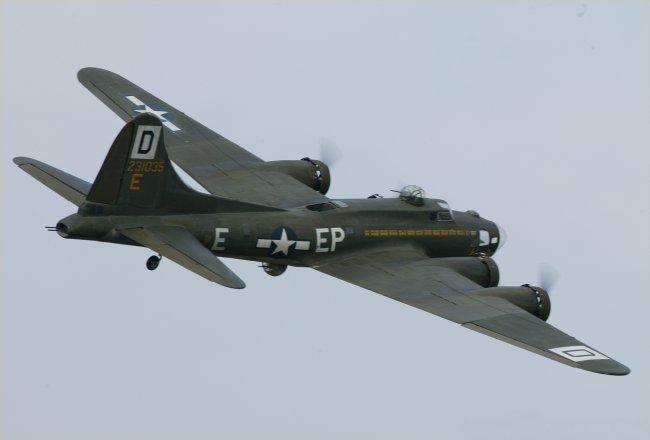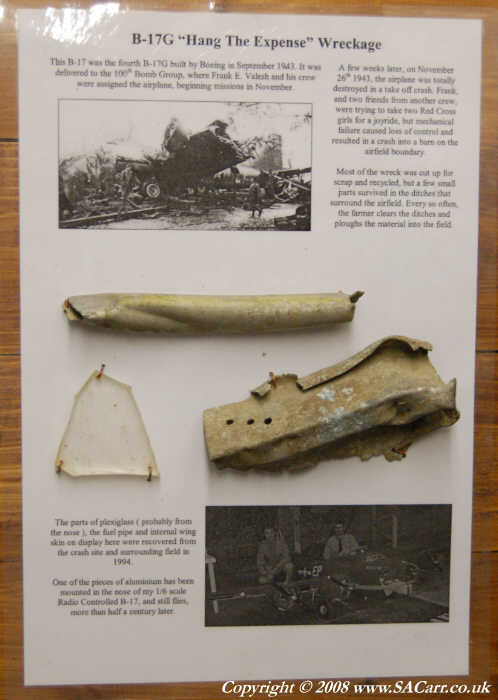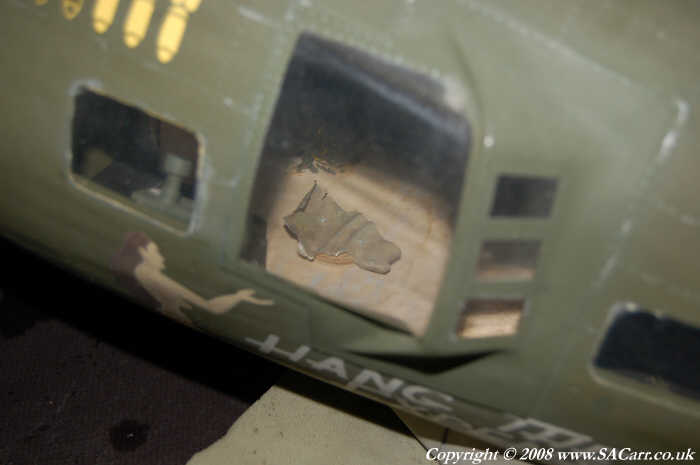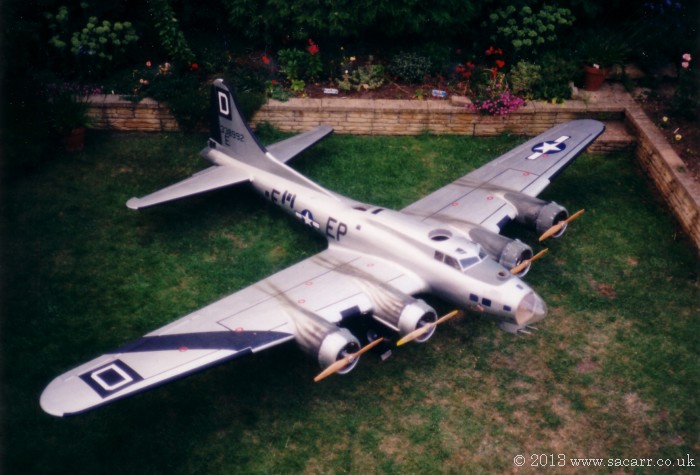| B-17G-BO-1 #42-31035 "Hang The Expense" | ||
 |
The
aircraft that this B-17 was copied from was only the forth B-17G built by
Boeing, leaving the production line in September 1943. After theatre
modification, it was assigned to a replacement crew in the 100th Bomb
Group, to make up for heavy losses during the Munster mission. By late
November 1943, it would be destroyed in a take off crash at its home base,
though the crew would go on to complete their tour by mid 1944.
1/6 Scale Model Specifications Wingspan - 17 feet 3.5
inches Engines - Originally 4
x 3W-40cc
Electronic ignition gasoline engines. This was later changed to 2 x 3W-60cc & 2 x 3W-40cc Radio - Futaba FC-18 & Field Force 7
|
|
| The
Bombardier/Navigator's compartment, seen below right, contains a piece
of aluminum recovered from the crash site of the original B-17 #035,
which
flew with the 351st Bomb Squadron, 100th Bomb Group, based at
Thorpe Abbotts in Norfolk, England in 1943. |
||

|
Other items that were recovered at the same time were made into the small display board shown to the left. The build time was 11 months from pencil on paper to first flight. This was in a basic silver scheme seen below without much detail. After the test flight, surface and other details were added, together with a respray into the authentic colour scheme for B-17 #035. |

The model requires two pilots to operate it safely, just as the fullsize B-17 did, and with responsibilities split in a similar manner. The pilot operates the flying controls (Ailerons, Elevators, Rudder ) and inner throttles. The Co-Pilot controls the two outer engines, which have independant throttles. This enables him to operate the engines asymmetrically to compensate for strong crosswinds during take off and landing, and to aid in taxiing the B-17. He is also responsible for the flaps and landing gear. This leaves the pilot free to concentrate solely on flying the aircraft. |

|
||